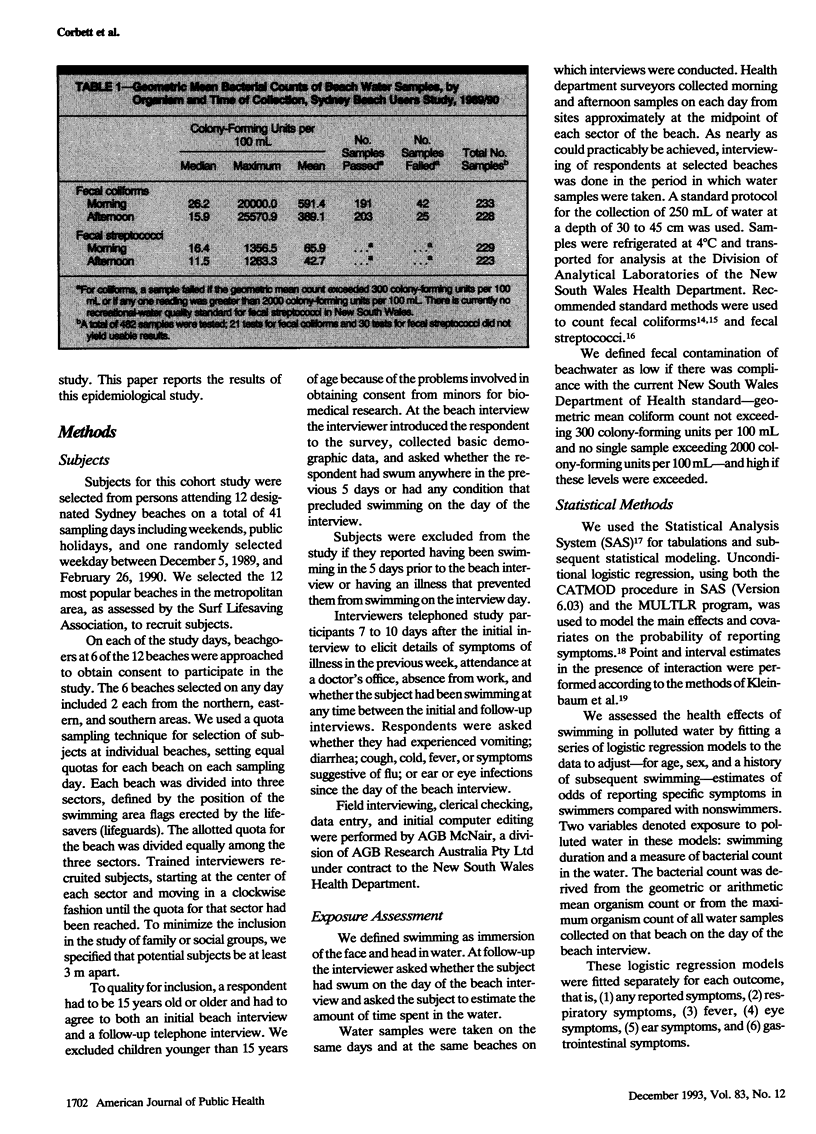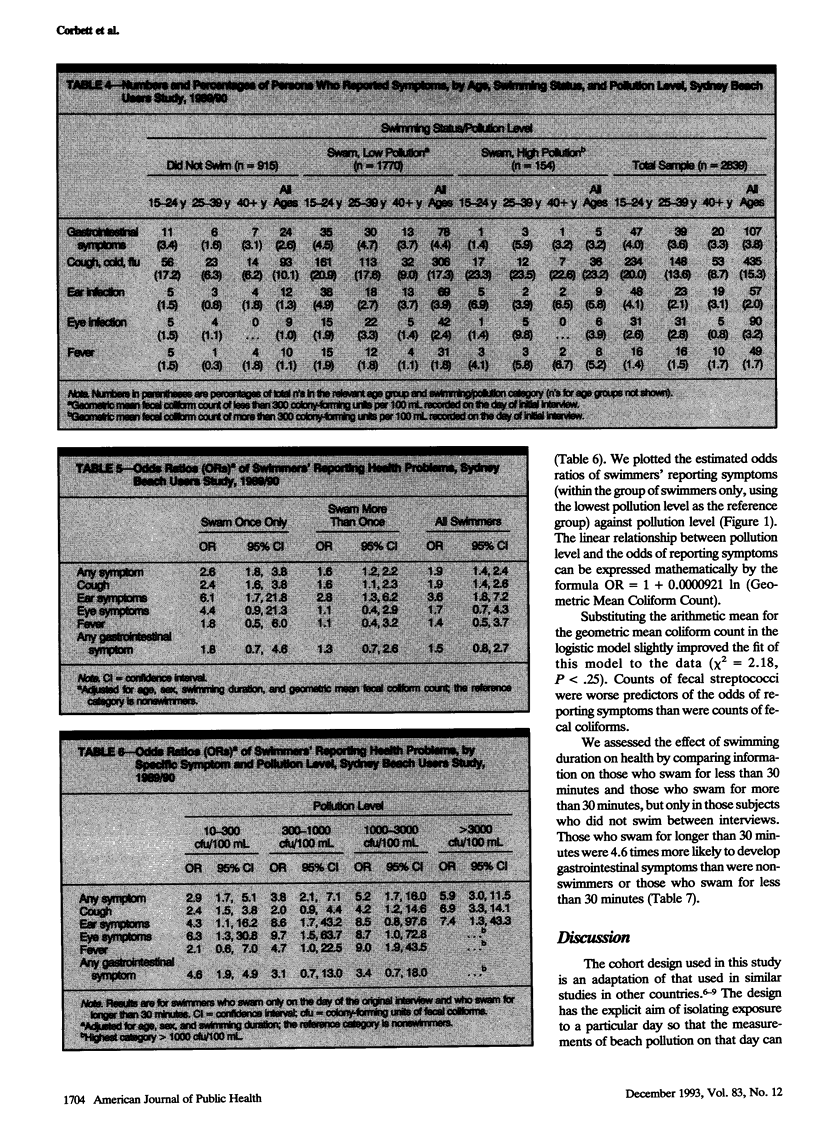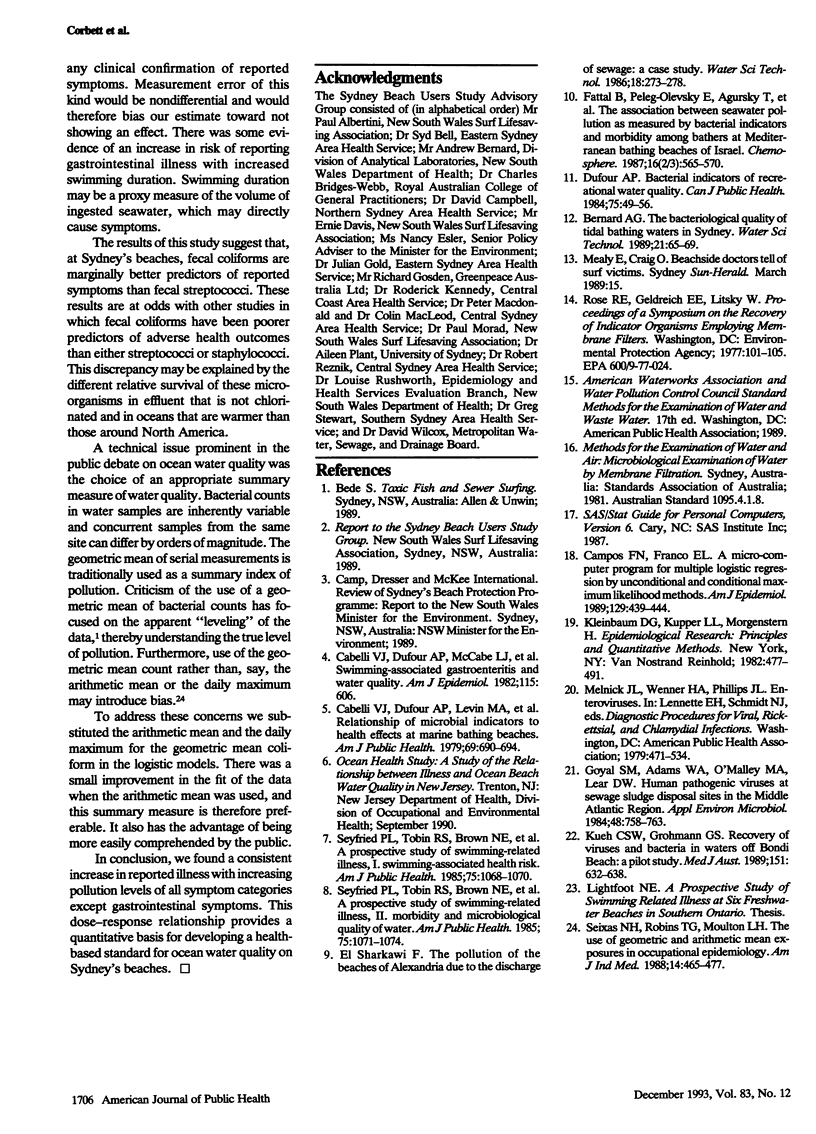Abstract
OBJECTIVES. The purpose of the study was to determine the health risks of swimming at ocean beaches in Sydney, Australia. METHODS. From people attending 12 Sydney beaches in the period from December 5, 1989 to February 26, 1990, we recruited a cohort of 8413 adults who agreed to participate in this study. Of these, 4424 were excluded either because they had been swimming in the previous 5 days or because they reported a current illness. Of the remainder, 2839 successfully completed a follow-up telephone interview conducted within 10 days after recruitment. We recorded reported respiratory, gastrointestinal, eye, and ear symptoms and fever that occurred within the 10 days between initial interview on the beach and the follow-up interview. RESULTS. A total of 683 participants (24.0%) reported experiencing symptoms in the 10 days following initial interview. Of these, 435 (63.7%) reported respiratory symptoms. Swimmers were almost twice as likely as nonswimmers to report symptoms. There was a linear relationship between water pollution and all reported symptoms with the exception of gastrointestinal complaints. CONCLUSIONS. Swimmers at Sydney ocean beaches are more likely to report respiratory, ear, and eye symptoms than beachgoers who do not swim. The incidence of these symptoms increases slightly with increasing levels of pollution.
Full text
PDF





Selected References
These references are in PubMed. This may not be the complete list of references from this article.
- Cabelli V. J., Dufour A. P., Levin M. A., McCabe L. J., Haberman P. W. Relationship of microbial indicators to health effects at marine bathing beaches. Am J Public Health. 1979 Jul;69(7):690–696. doi: 10.2105/ajph.69.7.690. [DOI] [PMC free article] [PubMed] [Google Scholar]
- Cabelli V. J., Dufour A. P., McCabe L. J., Levin M. A. Swimming-associated gastroenteritis and water quality. Am J Epidemiol. 1982 Apr;115(4):606–616. doi: 10.1093/oxfordjournals.aje.a113342. [DOI] [PubMed] [Google Scholar]
- Campos-Filho N., Franco E. L. Epidemiologic programs for computers and calculators. A microcomputer program for multiple logistic regression by unconditional and conditional maximum likelihood methods. Am J Epidemiol. 1989 Feb;129(2):439–444. doi: 10.1093/oxfordjournals.aje.a115148. [DOI] [PubMed] [Google Scholar]
- Dufour A. P. Bacterial indicators of recreational water quality. Can J Public Health. 1984 Jan-Feb;75(1):49–56. [PubMed] [Google Scholar]
- Goyal S. M., Adams W. N., O'Malley M. L., Lear D. W. Human pathogenic viruses at sewage sludge disposal sites in the Middle Atlantic region. Appl Environ Microbiol. 1984 Oct;48(4):758–763. doi: 10.1128/aem.48.4.758-763.1984. [DOI] [PMC free article] [PubMed] [Google Scholar]
- Kueh C. S., Grohmann G. S. Recovery of viruses and bacteria in waters off Bondi beach: a pilot study. Med J Aust. 1989 Dec 4;151(11-12):632–638. [PubMed] [Google Scholar]
- Seixas N. S., Robins T. G., Moulton L. H. The use of geometric and arithmetic mean exposures in occupational epidemiology. Am J Ind Med. 1988;14(4):465–477. doi: 10.1002/ajim.4700140410. [DOI] [PubMed] [Google Scholar]
- Seyfried P. L., Tobin R. S., Brown N. E., Ness P. F. A prospective study of swimming-related illness. I. Swimming-associated health risk. Am J Public Health. 1985 Sep;75(9):1068–1070. doi: 10.2105/ajph.75.9.1068. [DOI] [PMC free article] [PubMed] [Google Scholar]
- Seyfried P. L., Tobin R. S., Brown N. E., Ness P. F. A prospective study of swimming-related illness. II. Morbidity and the microbiological quality of water. Am J Public Health. 1985 Sep;75(9):1071–1075. doi: 10.2105/ajph.75.9.1071. [DOI] [PMC free article] [PubMed] [Google Scholar]


